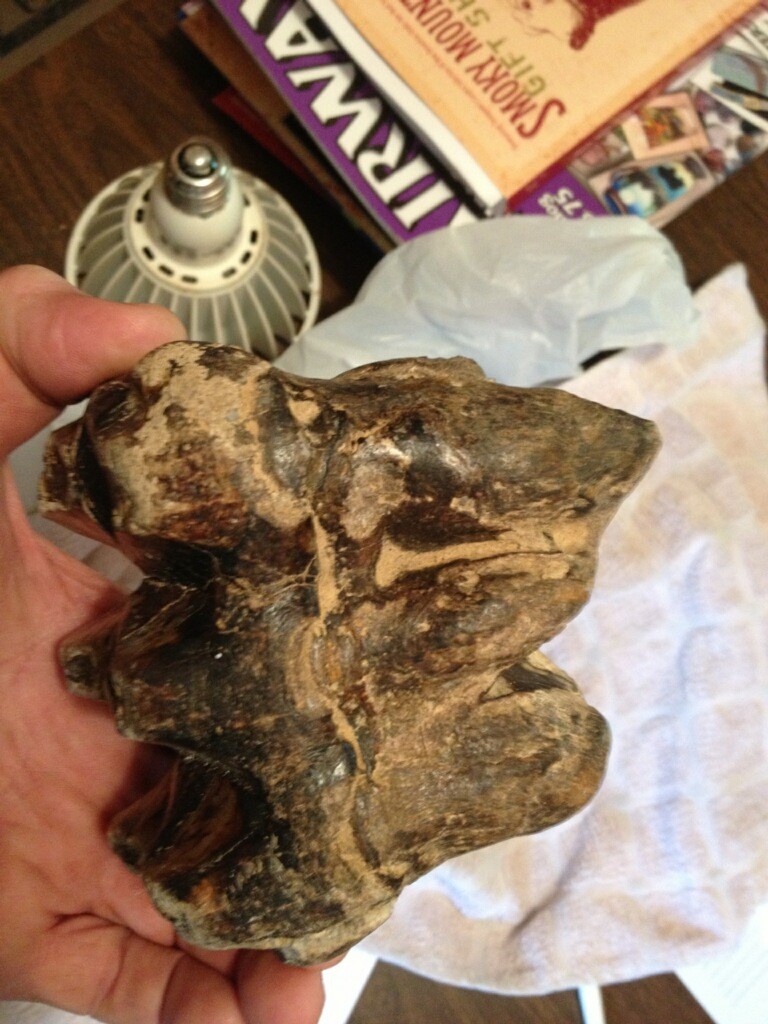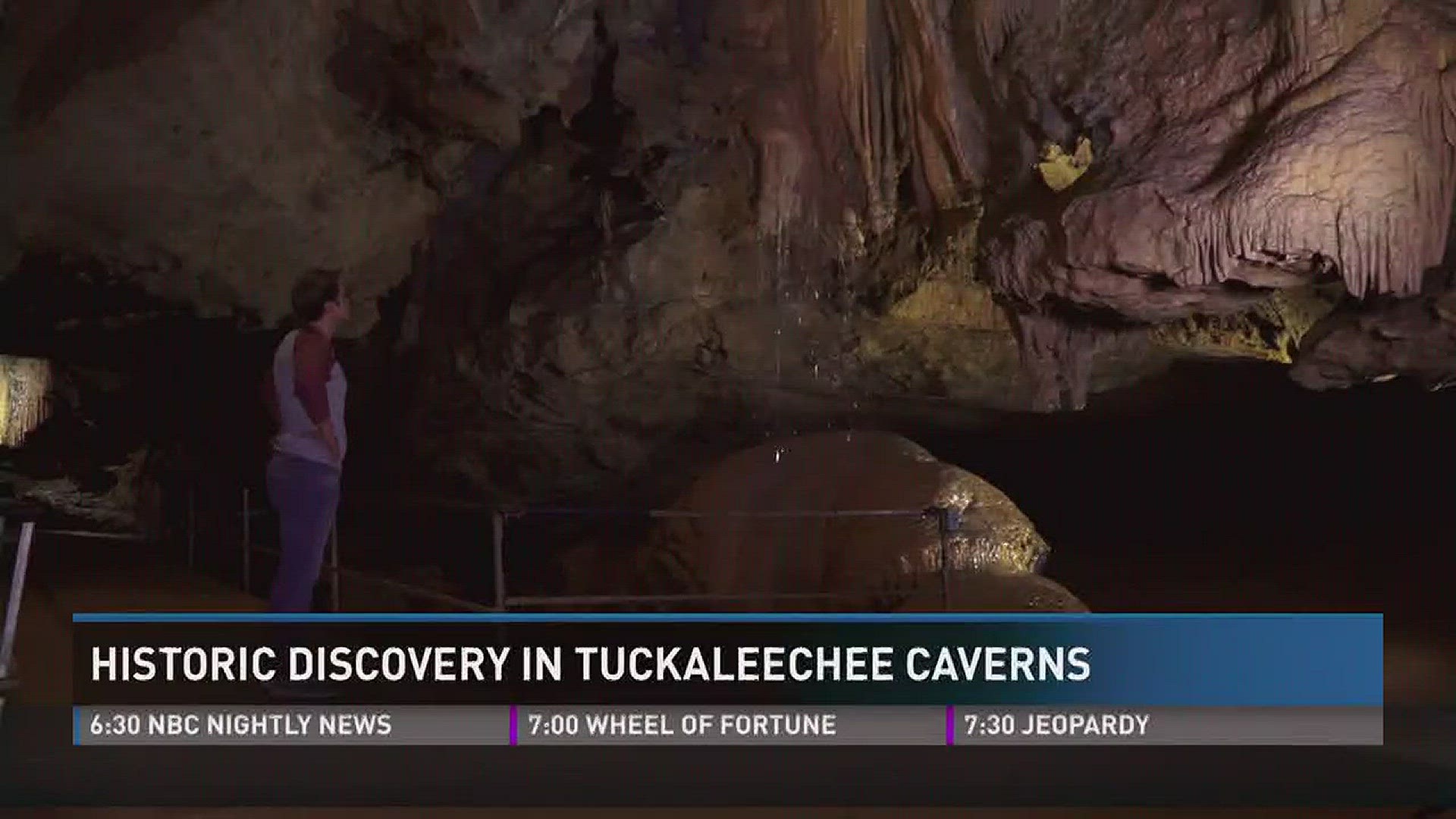Tuckaleechee Caverns is proud of its cave, boasting among other things that it has the tallest subterranean waterfall in the eastern United States.
It's also got a tooth it's pleased to show off. A mastodon's tooth, to be specific.
On Tuesday, the Townsend attraction began displaying the tooth, discovered last year by guide Lauren Webb near a cavern stream.
"She was looking around in the creek for quartz and she said she saw this strange-looking piece of quartz," cave manager Benjamin Vananda said Tuesday.
"I picked it up, and I knew right away it wasn't a rock," said Webb.
It turned out it wasn't quartz at all. It's been verified by University of Tennessee experts as an authentic mastodon tooth, according to Vananda. Another expert the cavern has consulted thinks it came from a three-hump mastodon.
The massive, elephant-like creatures roamed the earth thousands of years ago.
"Just knowing that mastodons were roaming right here in the Smokies, that's pretty neat," said Webb. "I mean they could get up 9 feet tall at the shoulder and be eight tons."
It's also a reminder for her that the cave, even at millions of years old, has more stories to tell.
"It's a natural time machine," Webb said. "You step millions of years into the past."
Vananda said he was looking around in the area when he spotted what looked like a fossilized bone. Two more ancient bones have also been found, but cave personnel haven't yet verified exactly they are.
It's likely there are even more bones buried in the area known as "the Beach."

"There's something down there, man," Vananda told 10News.
It's not unusual for remains of a mastodon to turn up in Tennessee and elsewhere.
A couple years ago scientists verified that a mastodon had been found at the Gray Fossil Site in the Tri-Cities area. The remains of a large specimen were discovered a couple years ago in Michigan.
The giant, hairy animals, which resembled elephants, flourished during the Ice Age thousands of years ago, according to the Tennessee State Museum.
At the time, what is now East Tennessee was rich with grasslands. Some 10,000 to 12,000 years ago, according to the museum, the climate began to heat up.
It's believed that helped kill off the mastodon.
Vananda also imagines how the creature ended up in the cave.
“It either fell in the sinkhole or was corralled in the sinkhole and the ancient people had them a barbeque," he said with a laugh.
For Webb, the find has changed the way she sees the cavern.
"I'm always going to look at it different because I've never pictured a mastodon roaming around my hometown," she said. "That's something else. Kind of blows your mind."
The Vananda family considers itself the caretaker of the cavern.
Souvenir hunting and digging are specifically prohibited at the site.

